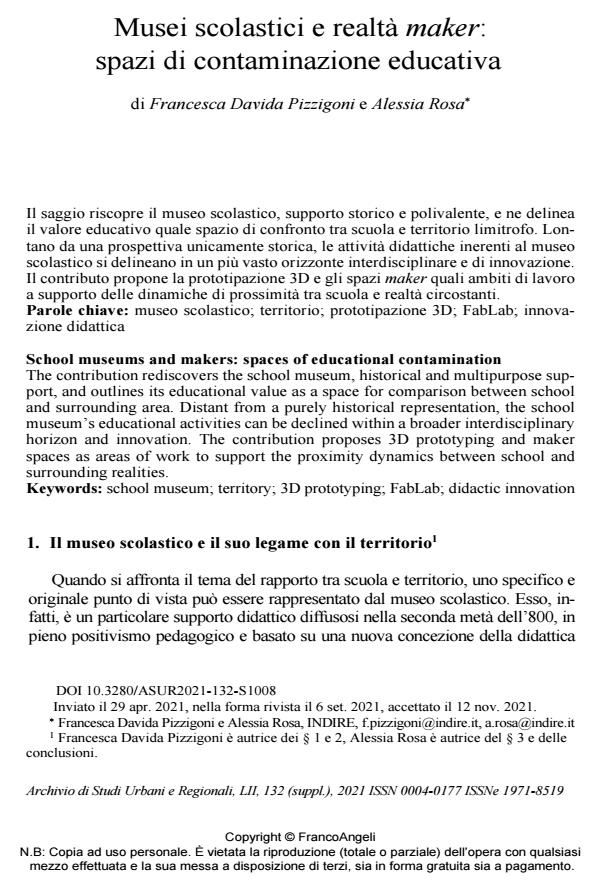School museums and makers: spaces of educational contamination
Journal title ARCHIVIO DI STUDI URBANI E REGIONALI
Author/s Francesca Davida Pizzigoni, Alessia Rosa
Publishing Year 2022 Issue 2021/132 Suppl.
Language Italian Pages 13 P. 125-137 File size 252 KB
DOI 10.3280/ASUR2021-132-S1008
DOI is like a bar code for intellectual property: to have more infomation
click here
Below, you can see the article first page
If you want to buy this article in PDF format, you can do it, following the instructions to buy download credits

FrancoAngeli is member of Publishers International Linking Association, Inc (PILA), a not-for-profit association which run the CrossRef service enabling links to and from online scholarly content.
The contribution rediscovers the school museum, historical and multipurpose support, and outlines its educational value as a space for comparison between school and surrounding area. Distant from a purely historical representation, the school museum’s educational activities can be declined within a broader interdisciplinary horizon and innovation. The contribution proposes 3D prototyping and maker spaces as areas of work to support the proximity dynamics between school and surrounding realities.
Keywords: school museum; territory; 3D prototyping; FabLab; didactic innovation
Francesca Davida Pizzigoni, Alessia Rosa, Musei scolastici e realtà maker: spazi di contaminazione educativa in "ARCHIVIO DI STUDI URBANI E REGIONALI" 132 Suppl./2021, pp 125-137, DOI: 10.3280/ASUR2021-132-S1008